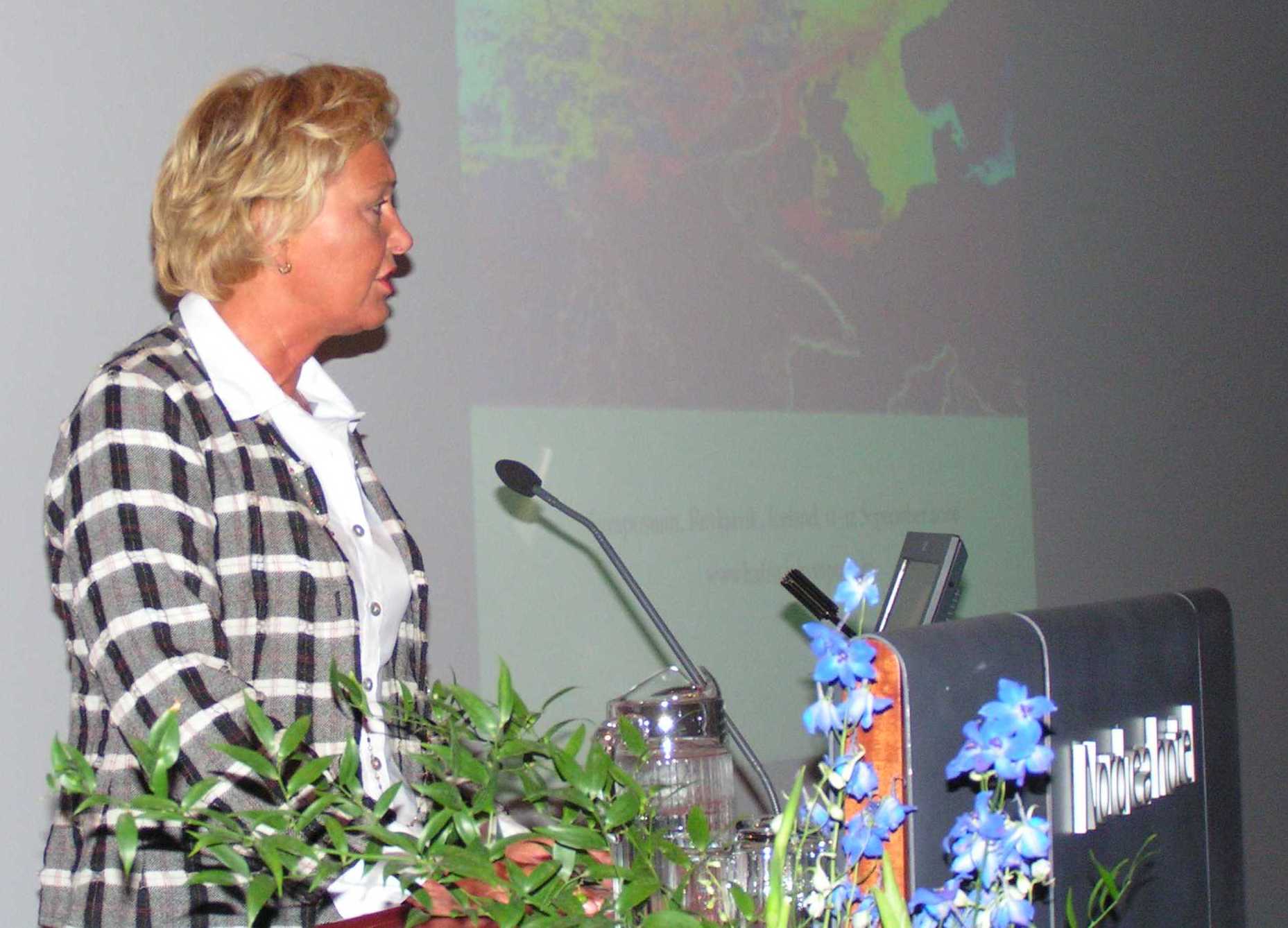Currents, Climate and Ecosystems in the North Atlantic: A Current Threat?
Opening address by Minister for the Environment,
Jónína Bjartmarz
Kæru ráðstefnugestir, velkomnir,
Ladies and Gentlemen,
Welcome to this symposium and welcome to Iceland,
Iceland has a chilly name, and foreigner often ask us how it came about. Accounts of the country’s settlement tell us that it was named by one of its first discoverer, Flóki, who climbed a mountain and saw beneath him a fjord full of sea ice. The climate and the ocean are thus interwoven in the very name of this country. It is therefore natural that the government of Iceland is ready to sponsor a conference like this one, which aims to bring us up to date with the latest scientific information on the interaction between the ocean and the climate, which have shaped our history and will continue to shape our livelihood and economy.
Iceland is considerably warmer than its latitude would indicate. The Gulf Stream brings us warmth from the tropics, so that the average temperature here is about 5°C warmer than would be expected at the latitude of Reykjavík, the world’s northernmost capital. The meeting of warm and cold ocean currents in Icelandic waters give rise to conditions where plankton and other sea life flourishes, so that we have some of the world’s richest fishing grounds. Ancient historians said the Egyptian civilization was “a gift of the Nile”. We Icelanders might thank the salty river of the Gulf Stream in a similar way for sustaining our society and economy.
We expect the Gulf Stream to continue to provide us with a mild climate and good fishing. We are concerned by climate change, but we are somewhat assured by the claim of the Third Assessment of the International Panel on Climate Change that it is very unlikely that the Gulf Stream will overturn in the 21st Century.
Climate science has advanced since the publication of the third Assessment in 2001, and we would like some reassurance that the odds for a “current change” are still low. Hardly a week goes by without some news item on the results of a new climate study. One of the least known aspects of climate change is how it interacts with the ocean. The aim of this symposium is to cast a light on what science today can tell us about this interaction, what it can not yet tell us, and how we can improve our knowledge.
This is a symposium where science is in the limelight, not politicians and other decision-makers. This does not mean that only experts in the natural sciences should listen to what is said here today and tomorrow. You are not only discussing some technical topics within your respective fields; you are addressing different aspects of a fundamental question regarding the future of Iceland, the North Atlantic region and, indeed, the planet. We need to base policy on facts and knowledge, so it is important that we get our facts straight, and constantly improve our understanding. We hope that you will help us to improve our understanding of the climate and the ocean here in Iceland – and elsewhere.
I would like to take this opportunity to thank the Nordic Council of Ministers for supporting this symposium, which we in turn see as a contribution to its environmental programme, which highlights better understanding of climate and ocean issues. I would like to thank the Vestnordisk Oceanklima research project, which also supported the symposium, Professor Jón Ólafsson, who has chaired the scientific preparations for the symposium, and others who have helped organize it. And I would of course want to thank all the presenters and participants for helping us creating this meeting today.
I hope you have an enlightening symposium and a good time here in Iceland.
Thank you,

